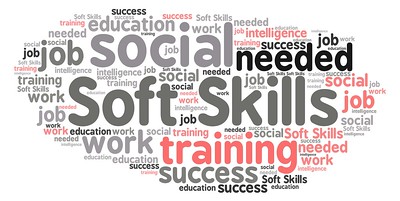
By Jennifer Bland
College graduates become community leaders and leaders in their professions. They take on roles where they make independent decisions and create new solutions. They transform coursework and textbook knowledge into lifelong dreams. Active learning strategies can be an important way to give students practice with the professional roles they’ll take on after graduation.
The National Association of Colleges and Employers identifies 8 critical skills or competencies that employers seek in college graduates: Career & Self Development, Communication, Critical Thinking, Equity & Inclusion, Leadership, Professionalism, Teamwork, and Technology.
Active learning strategies require students to develop content and career skills simultaneously. As students are talking with each other and brainstorming ideas, they improve their communication. As they take into account each other’s perspectives to solve real-world problems and analyze real data, they develop critical thinking. As they work in groups, make presentations, and write blogs they begin to learn teamwork and experience with technology. Through the process, they learn professionalism and self-development.
Active learning is one of the high-impact practices that help students to develop a productive relationship with their peers and instructors. When students are given opportunities to connect with a partner or group before sharing with the entire class, they also develop a sense of community and belonging which can lead to more in-depth conversations and more diverse ideas being shared.

At USC Upstate, students who have taken a class in an active learning classroom have a 12% higher retention and persistence rate than those who haven’t. Not only are these students staying, but they are also learning the skills they will need to be successful in life. Which student would you hire– a student who describes their educational experiences in terms of exams and papers or a student who gives examples of using design thinking to build new knowledge in teams with their classmates?
The Engaged Pedagogy and Hybrid Course Design Institute prepares faculty to let go of control in the classroom and to allow students to take the reins of their own learning. Even the active learning classroom spaces where they learn look like collaborative workplaces. When you’re ready to start active learning, make an appointment for a consultation with the CAIFS Booking App!
Additional Resources
- Career Development Competencies—Are You Spartan Ready?
- High-Impact Educational Practices: What They Are, Who Has Access to Them, and Why They Matter
- 9 Benefits of Active Learning (and why your college should try it)
- Active Learning, Center for Educational Innovation, University of Minnesota
- Active Learning, Center for Teaching, Vanderbilt University

